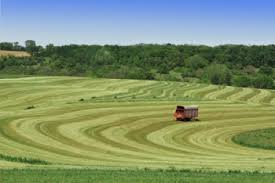When most people think of land preservation, they envision forests, not farmlands. However, many farmers in the Treasure Valley are concerned about the recent rapid loss of farmland to development, as this area has about 365,600 acres of the most productive agricultural land in the nation. Boise State faculty and students have been busy researching how urban growth and farmland loss will change the face of the Treasure Valley if these development trends continue.
Graduate student Jenna Narducci was invited to present research titled “Projecting Urban Expansion in the Treasure Valley to 2100” at the Idaho-Eastern Oregon Seed Association (IEOSA) winter convention. Narducci is studying geosciences and human-environment systems at Boise State.
The research Narducci presented at the convention shows remarkably high rates of farmland loss in the future. For example, if patterns of future urban development follow those from 2001-2011, the Treasure Valley will lose farmland at a rate of 2,000 acres per year, which equates to about 20,000 acres per decade, and about 190,000 acres (more than half of the current farmland) by the year 2100.
The research was conducted by a team of Boise State researchers that included Christian Sprague and Michail Fragkias from economics, and Narducci, Jodi Brandt, Shawn Benner and Laura McSherry from human-environment systems.
You can learn more about future of urban growth and farmland in the Treasure Valley via this story map. The story map of the project, led by geosciences students McSherry and Narducci, recently was named “Map of the Month” by the Idaho Geospatial Office.
BY: CIENNA MADRID PUBLISHED 9:28 AM / JANUARY 5, 2018
